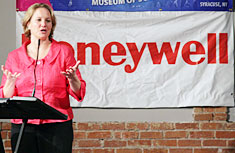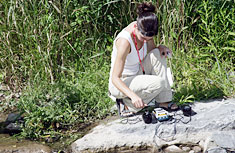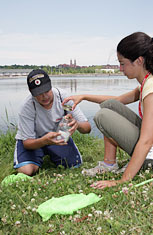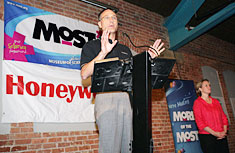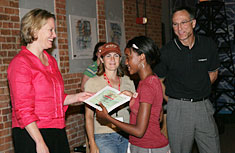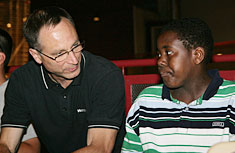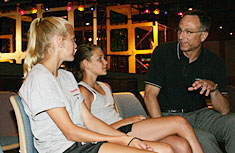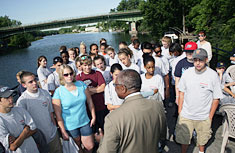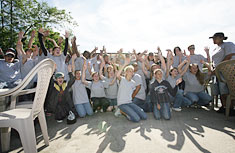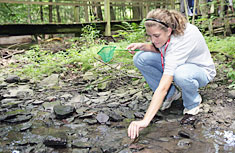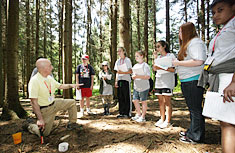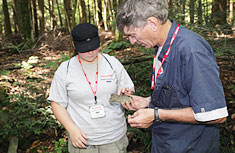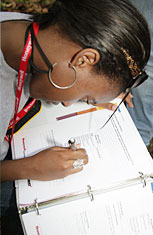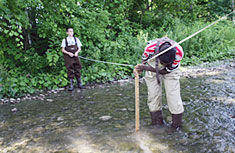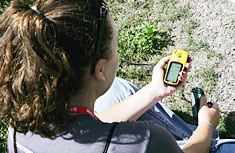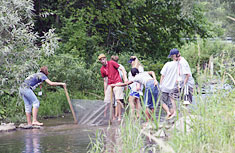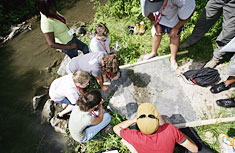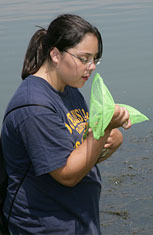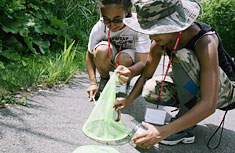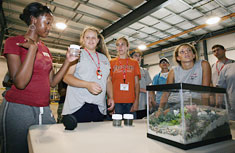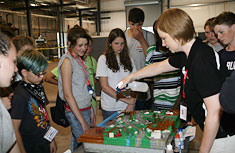Onondaga County Executive Joanie Mahoney Honors Students as Week-Long Program Concludes — Honeywell Discovery Day Scheduled for September
Having retired their bug nets and completed their field notebooks, the 2008 Honeywell Summer Science Week at the MOST students were congratulated by Onondaga County Executive Joanie Mahoney last Friday and reminded that their scientific adventures were far from over.
“You represent the future of Onondaga County and I am certain the knowledge you gained this week will inspire tomorrow’s scientific breakthroughs,” said County Executive Mahoney. “I am very proud of each and every one of you.”
During the week the students walked along Onondaga Creek, explored the geology of Clark Reservation, visited Heiberg Memorial Forest, and toured the Honeywell Groundwater Treatment Facility and the Onondaga Lake Salt Museum. They conducted their scientific fieldwork by testing the water quality, collecting bugs, inspecting geological formations and studying the effect of urban and rural development on Onondaga Creek. Academic partners included middle school teachers, as well as faculty and graduate students from Syracuse University and the State University of New York College of Environmental Science and Forestry (SUNY-ESF).
The student-scientists received completion certificates on Friday and became MOST Associates.
As MOST Associates students will continue their scientific adventures with a free one-year museum pass.
Students also received an invitation to return on September 13 for the Honeywell Discovery Day. On Discovery Day the students will present the findings of the water experiments they conducted.
The week began with a boat tour of Onondaga Lake.
Once off the boat the students took a trip to Heiberg Forest.
A trip to the Tully Valley let students get their feet wet.
On the final day students toured Honeywell’s Groundwater Treatment Facility to learn about the lake cleanup process.
For more information on the Onondaga Lake cleanup, visit www.onondaga-lake-initiatives.com.




